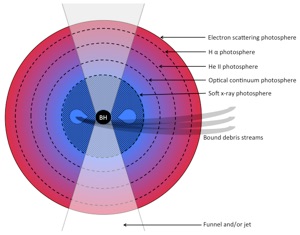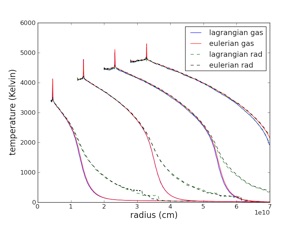Nathaniel Roth

Specialty areas
AGN feedback, Working with Daniel Kasen.
Biography
Starting September 2016 I will be a Joint Space-Science Institute Fellow at the University of Maryland and NASA Goddard. Formerly I was a physics graduate student at the University of California, Berkeley.
My advisor was Daniel Kasen.
I develop and perform radiative transfer calculations to connect models of astrophysical systems to observations. My primary research focus is the tidal disruption of stars by supermassive black holes. I am also interested in modeling the emission and feedback of active galactic nuclei.
You can view my CV here.
Outreach
I participate in Berkeley’s Compass Project, a student-run program dedicated to building community in the physical sciences.
Article in The Physics Teacher
Research
Tidal disruption events (TDEs)

With Dan Kasen, James Guillochon, and Enrico Ramirez-Ruiz, I performed radiative transfer modeling of the x-ray through optical emission following the tidal disruption of a star by a super-massive black hole.
We found that an extended envelope can reprocess soft x-rays from accretion to UV and optical wavelengths with fluxes that match observations at the peak of TDE light curves. We also found that the emission line strengths in the optical spectrum can be significantly affected by properties of the envelope such as its radial extent. This can prevent a clear detection of hydrogen lines even for the disruption of a main-sequence star.
Molecular outflows launched by Active Galctic Nuclei (AGN)

With Dan Kasen, Eliot Quataert, and Phil Hopkins, I performed a three-dimensional radiative transfer study of the radiation force on dusty gas within approximately 10 parsecs from an accreting super-massive black hole.
We found that for a gas rich environment resembling that of an ultra-luminous infrared galaxy, the multiple interactions of infrared photons can allow the AGN accretion radiation to exert a force of several times LBH/c on the gas in the torus region. This force has the capability to launch an outflow with a mass-loss rate exceeding 100 solar masses per year at 30 parsecs. The properties of the outflow depend strongly on the opening angle of the torus and the locations where dust is sublimated.
Radiation Hydrodynamics

With Dan Kasen, I have developed a radiation-hydrodynamics code in which the radiation is tracked with Monte Carlo radiative transfer.
Ultra-Compact HII regions

With Steve Stahler and Eric Keto, I developed a model for cometary ultra-compact HII regions to explain their lifetimes and morphologies.
Reheating After inflation

With Richard Easther and Hal Finkel, I helped to develop a pseudo-spectral code to evolve inflationary scalar field models.
